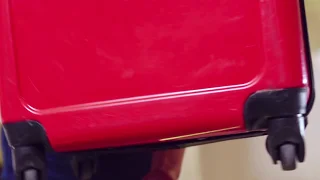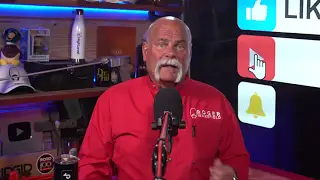When building a new home or tackling a major remodel, you’ll hear the term “top out” from your plumbing contractor. You may also see various pipes sprouting out of floors, walls, and even through the roof before drywall goes up. This phase—often done right after framing—is crucial because it ensures the entire water, drain, vent, and gas systems are in place before the walls get sealed.
In this post, you’ll learn exactly what a plumbing top out is, what it looks like, and why it matters for a well-functioning system. If you’re a homeowner or a budding plumber, understanding the top-out phase helps you spot quality work and catch potential mistakes while there’s still time to fix them.
What Is a Plumbing Top Out?
A plumbing top out, also called a rough-in above the slab, is when all of the supply lines, drains, vents, and gas lines get installed through the walls and up through the roof (for vents) after the foundation is poured and framing is up. Before this step, the plumber handles under-slab work (the rough-in), placing sewer lines and water lines in or beneath the concrete. Now that the house has walls, the plumber can run pipes vertically:
- Water supply lines into each fixture area (sinks, tubs, toilets, showers).
- Drains and vents up and out through the roof.
- Gas lines to fireplaces, ranges, and water heaters, if applicable.
During top out, you’ll see open studs everywhere, minimal insulation, and no drywall yet. It’s the perfect time for plumbers to ensure everything is laid out properly, that pipes are braced, and that vents can exit through the roof without obstruction.
How the House Looks Before and After Top Out
Before top out, you might only see a few stub-ups sticking out of the slab or basement floor. After top out, you’ll notice:
- Pipes running through wall cavities for hot and cold water.
- Drain lines and traps located exactly where the future sinks, tubs, and toilets will be.
- Vent pipes extending upward and turning through the roof.
- Gas stub-outs for fireplaces, cooking appliances, or water heaters.
If you compare two identical spots—one pre-top-out and one post-top-out—you’ll see how a simple drain stub transforms into a fully braced assembly with valves, vents, and possibly future tie-ins for things like dishwashers or washing machines.
Key Areas to Observe in a Top Out
- Kitchen
- You’ll often see a drain stub for the sink and a separate line for the dishwasher if sharing the same discharge.
- There should be stub-outs for hot and cold water, and possibly a gas line if you have a gas range.
- A vent line typically loops up (sometimes referred to as a loop vent) to ensure proper drainage and no gurgling from the sink.
- Bathrooms
- Each bathroom fixture—like a toilet, sink (lavatory), tub, or shower—receives its own drain line that ties into the main sewer.
- Vents go upward into the attic and out the roof to release sewer gases.
- You might see a tub or shower pan installed, with piping set for the valve and shower head, ensuring adequate height for tall users.
- Laundry and Utility Rooms
- Washing machine box: This box often includes hot and cold supply lines and a standpipe drain where the washer discharges.
- Gas water heaters or tankless water heaters: You’ll see gas lines stubbed and the water in/out lines.
- If the water main comes in through this area, there might be a valve manifold or an area for future whole-home filtration.
- Hose Bibs and Outdoor Stub-Outs
- Exterior faucets (hose bibs) will be roughed in through walls, usually with nail guards to protect piping from future siding or trim nails.
- Gas lines can also exit for future outdoor grills or fireplaces.
- Roof Vent Flashings
- Small vent pipes pop up through the roof, and you’ll see aluminum or rubber flashings left on-site for the roofer to install around them. These keep rain from leaking down around the pipes.
Why Top Out Is Critical
Placement Accuracy
If the drains or supply lines are off by even a couple of inches, you could have a misaligned fixture or difficulty in installing cabinetry. Once drywall is up, moving these lines is expensive and time-consuming.
Leak and Pressure Testing
During or after top out, plumbers conduct tests. For instance, a water line pressure test or an air test on the drain lines can catch leaks while the walls are still open. Fixing issues later can require tearing out drywall.
Vent Performance
Vent pipes need clear, unobstructed paths to the roof for proper flow. The top-out phase is where plumbers finalize these routes. Poor venting causes slow drains, foul odors, and gurgling noises in your fixtures.
Gas Safety
If you have gas appliances, lines must be sized and routed with care. The plumber ensures each stub-out has the correct shutoff valve location and that no wood studs interfere with pipe runs. Proper bracing and, if necessary, flexible connectors set the stage for safe, efficient gas usage.
Common Top-Out Materials
- PEX or Copper for water supply lines.
- PVC, ABS, or Cast Iron for drain and vent lines (depending on local codes and noise requirements).
- Black Iron or CSST (corrugated stainless steel tubing) for gas lines.
- Nail Guards or Steel Plates where pipes go through studs, preventing future nail or screw damage.
Typical Inspections
Most municipalities require a rough-in plumbing inspection at the top-out stage. The inspector checks for:
- Correct pipe sizes for both drainage and water supply.
- Proper support and bracing.
- Adequate venting—nothing too flat or restricted.
- Sealed or capped lines for air or water pressure tests.
If all passes, the project moves on to insulation and drywall, effectively covering the top-out work from view.
Tips for Homeowners
- Photograph Everything. Before insulation and drywall, snap pictures or videos of the open walls. That way, if you need to find a line or stud in the future, you have a visual reference.
- Ask About Future Upgrades. If you might add a water softener, outdoor kitchen, or secondary laundry line, mention it now. The plumber can stub-out extra lines or valves for later use.
- Verify Main Shutoff. Make sure you know where your main shutoff is located—sometimes it’s in a garage or utility area—and check if a second shutoff might be beneficial for easy maintenance.
The Flow from Under-Slab to Top-Out
- Under-Slab Rough-In
All sewer and water lines are positioned before the foundation is poured. This ensures drains exit exactly where fixtures will sit. - Foundation Poured
Pipes stub up through the slab or basement floor, ready for connection once framing starts. - Framing
After walls go up, it’s time for the plumber to run supply lines, vent lines, and gas lines through studs. - Top-Out Completion
Everything is tested, braced, and extended out the roof for vents. The entire system is ready for fixtures and finishing once the walls are enclosed.
Why the Top Out Matters for the Final Finish
When you see a completed bathroom or kitchen, everything looks neat—sinks, faucets, tubs, dishwashers. Yet all that neatness relies on hidden pipes being in the exact right place. A well-done top out ensures:
- Fixtures align with cabinetry and backsplashes.
- Shower heads mount at comfortable heights without re-framing.
- Toilets have the correct distance from the wall (e.g., a true 12-inch rough-in).
- No awkward offsets or strange pipe routes inside the walls.
In short, a proper top out paves the way for a smooth final finish without weird patches or last-minute relocations.
Final Thoughts on Plumbing Top Outs
If you’re building a home or watching your plumber install the top out, you might see a chaotic network of pipes. But once drywall and fixtures are in, it all seems to vanish—until it matters. By understanding the top-out phase, you can appreciate the skill and planning behind every drain, vent, and supply line. You’ll also spot if something seems off—like a toilet flange too close to a wall or a missing nail guard.
The top out is your last chance to get pipe placement perfect and confirm leak-free connections before the walls go up. A professional, code-compliant job means fewer plumbing headaches and a home where everything drains properly and water flows exactly as it should.
If you want to see more behind-the-walls plumbing or are just curious about how professionals handle top outs, check out the accompanying video and keep learning. In the meantime, rest assured that a well-executed top out sets the stage for a home’s lifetime of reliable hot showers, clean dishes, and worry-free flushes.




